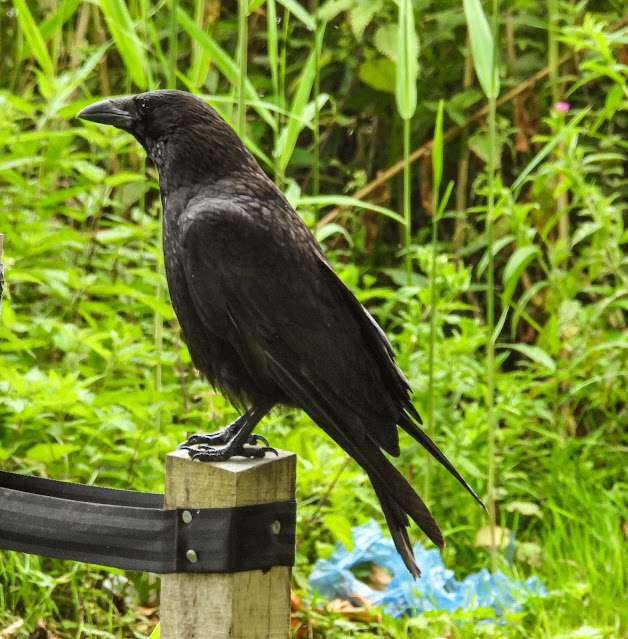The plumage of the carrion crow is black with a green or purple sheen, much greener than the gloss of the rook (Corvus frugilegus). The bill, legs and feet are also black. It can be distinguished from the common raven by its size of around 48–52 centimetres (19–20 in) in length as compared to an average of 63 centimetres (25 inches) for ravens, and from the hooded crow by its black plumage. The carrion crow has a wingspan of 84–100 centimetres (33–39 in) and weighs 400–600 grams (14 oz – 1 lb 5 oz).
Juvenile carrion crows can be identified by their brownish plumage and blue eyes, both of which darken to black and brown as the crow grows older.
The rook is generally gregarious and the crow largely solitary, but rooks occasionally nest in isolated trees, and crows may feed with rooks; moreover, crows are often sociable in winter roosts. The most distinctive feature is the voice. The rook has a high-pitched kaaa, but the crow's guttural, slightly vibrant, deeper croaked kraa is distinct from any note of the rook.
The carrion crow is noisy, perching on a vantage point such as a building or the top of a tree and calling three or four times in quick succession, with a slight pause between each series of croaks. During each series of calls, a crow may perform an accompanying gesture, raising its shoulders and bowing its head and neck downwards with each caw. The wing-beats are slower, more deliberate than those of the rook.
Like all corvids, carrion crows are very intelligent. For example, they can discriminate between numerosities up to 30, flexibly switch between rules, and recognise human and crow faces. Given the difference in brain architecture in crows compared to primates, these abilities suggest that their intelligence is realised as a product of convergent evolution.

